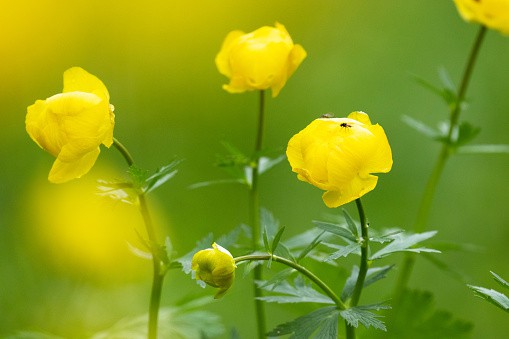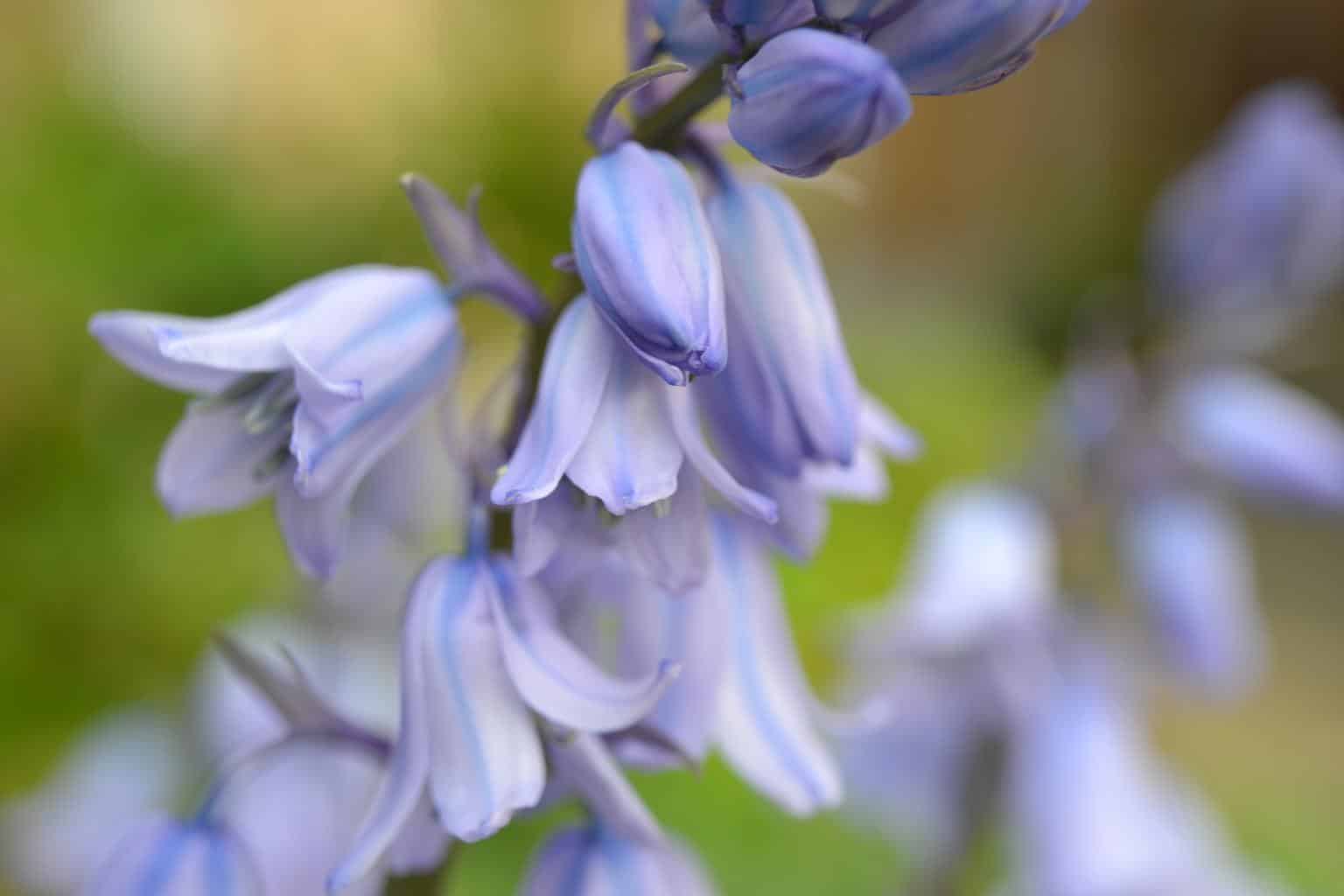Trollius europaeus is also known as Globe Flower. It is part of the Ranunculaceae, or buttercup, family and is a perennial flower. This graceful flower is an upright perennial that produces large, bowl-shaped yellow flowers that look a lot like Buttercups. They provide a luminous carpet of golden color from late spring onwards. They prefer damp environments and look great when planted in large groups. It grows up to three feet tall and is low maintenance and very adaptable.
Meaning and Symbolism
The etymology of the Trollius europaeus has its roots in Latin, as “trollius” is derived from the word “trollis”, meaning “globe-shaped”. This flower is seen as a symbol of serenity, while its yellow colour is associated with cheerfulness, blossoming and strong personalities.
History, Mythology, and Religious Significance
The Globe flower has a historical significance in many French communities, as it was a symbol used in the Vendée Wars. It is also said to have inspired the creation of a beautiful French tale, La Belle et la Bête, by author Madame Gabrielle-Suzanne Barbot. The intricate petals of the Trollius europaeus is believed to symbolize the intricate beauty of Nature, and is often seen as a sign of long-lasting relationships and fidelity.
Varieties and Defining Characteristics
Trollius europaeus comes in a variety of colours which include soft yellow, orange and pink. It has a bell-like shape with delicate petals, resembling a dandelion, and range in size between 1 to 5 inches. Its foliage is a bright green and lance-shaped.
How to Plant
Planting Globe Flowers is quite uncomplicated as they thrive in well-draining soils and sun to partial shade. The soil should have a slightly acidic pH with a nutrient-rich compost to ensure better blooming. Also, it is important to make sure that the soil remains damp but not saturated to prevent root decay and fungal infection. Ideally, temperatures must stay between 60–85° F for a better growth of the plant.
How to Pot and Repot
Since Globe Flowers can be planted directly in the soil, potting is not necessary however, if you want to temporarily move your flower from one place to another or want to keep the plants indoors for a couple of days, potting is a great option. The pot for the flowers should be small and shallow, with a hole in the bottom of it for water drainage. When potting the flowers, make sure the soil is at a consistent level so that the roots remain protected. Additionally, once every two years, it should be repotted in fresh soil as the old soil becomes compact and ill-aerated with time.
How to Prune
It is advisable to allow the flowers to complete the entire blooming season before pruning them. During this period, it is important to cut off all leaves that are yellow or decaying and deadhead the infected, old and pale flowers. Pruning of the healthy flowers should be done with the help ofSharp pruning shears, which should cut through the stems of the flowers at an angle close to the area from which the leafs grow out of. It is important to also sanitize the pruning shears before and after pruning the flowers to prevent the spread of diseases or fungi.
How to Propagate
Propagation of Globe Flowers is possible by both cuttings, and by division. To propagate the flowers through cuttings, it is important to use young stem cuttings, as they are more likely to take root. Cuttings must have a minimum of two leaves on them and a few inches of stem, and should be placed in dampened soil. It is important to keep the soil damp and not wet. Moreover, division should be done post-flowering or in early spring. By digging around the plant and carefully separating the root section in equal halves, it is possible to plant both halves in new soil.
Common Pests and Diseases
The Trollius europaeus may fall prey to powdery mildew, which is easily identifiable by tiny grayish-white spots on the plants parts, mostly the upper portion of the leaves. To prevent the spread of mildew, it is important to keep the plants in a humid atmosphere and keep the foliage dry by avoiding unnecessary sprinkling. Furthermore, Aphids and thrips cause immense damage to the flowers and should be promptly treated with insecticides. The Glove Flowers are also prone to fungal diseases such as Botrytis, which is observed in the form of dark brown spots on the foliage.
Frequently Asked Questions
- Q: How often should I water Globe Flowers?
- A: During the blooming season, Globe Flowers can be watered once a week depending on the soil and the weather conditions.
- Q: When should I start pruning the flowers?
- A: It is advisable to prune the flowers after the flowering season and not during the blooming season.
- Q: How long will the flowers take to get established in the soil?
- A: Globe Flowers can usually grow healthy and establish in the soil in within two to three weeks.
Table Fact Sheet
| Description | Information |
|---|---|
| Flower | Globe Flower |
| Scientific Name | Trollius europaeus |
| Family | Ranunculaceae |
| Plant Type | Perennial |
| Mature Size | Up to 3 feet tall |
| Sun Exposure | Sun to partial shade |
| Soil Type | Well-draining |
| Soil pH | Slightly acidic |
| Bloom Time | Late spring |
| Flower Color | Yellow, orange and pink |
| Hardiness Zones | 3 to 8 |
| Native Area | Europe |
What we love from Amazon this week
Buy these wonderful flowers directly from Amazon:















